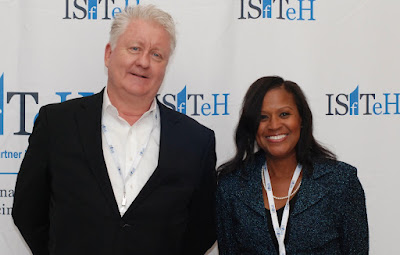Cybercrime against healthcare institutions has exploded in recent years. In 2021, more than 1 in 3 healthcare organizations reported being hit by ransomware.
The situation has been considerably worsened by the pandemic, which produced a triple threat for healthcare systems: a rapid expansion of internet-connected technologies and services causing an expanded attack surface, an increase in many types of cyberattacks, and fewer available resources to defend against cyberattacks.
Cybersecurity has become an important part of healthcare, and every radiology practice can easily become victim of a targeted cyber-attack. This was the subject of one of the opening education lectures of the recent RSNA (the Radiological Society of North America) conference in Chicago presented by Professor Benoit Desjardins, MD at Penn Medicine, Associate Professor Shandon Wu, at University of Pittsburgh, and the author.
AI is now extensively used by both attackers (“Offensive AI”) and defenders (“Defensive AI”). This four part lecture explored three forms of interaction between AI and cybersecurity that affect healthcare:
(1) Offensive AI: how cybercriminals are weaponizing artificial intelligence to improve their attacks against medical institutions, including how cyber-criminals are using AI to improve success of different types of attacks, such as phishing, scanning, and intrusions of medical centers.
(2) Defensive AI: how cyber-defense teams at medical centers are using artificial intelligence to supplement the limited capabilities of humans to detect and defend against cyberattacks, especially now that many of those cyberattacks are controlled by artificial intelligence.
(3) AI Model Safety: how cyber-threats can disrupt the integrity of medical images, and how this affects diagnosis by AI and humans, including an overview of the multiple ways in which data can be modified to fool AI algorithms.
(4) A panel discussion of the practical implications of AI for radiology practices.
AI is incredibly powerful and in a radiological imaging environment can mean the difference between early and timely diagnosis of cancers and other potentially life threatening conditions, or a medical condition not being discovered until it's too late. But Radiologists should be aware that AI models can be poisoned and corrupted, or used for nefarious purposes. If AI modelling and training is conducted safely and securely however, the benefits appear to far outweigh the risks.
For more details, please see my slides from the event on the growth of healthcare cybercrime and the issues of Offensive AI.






























